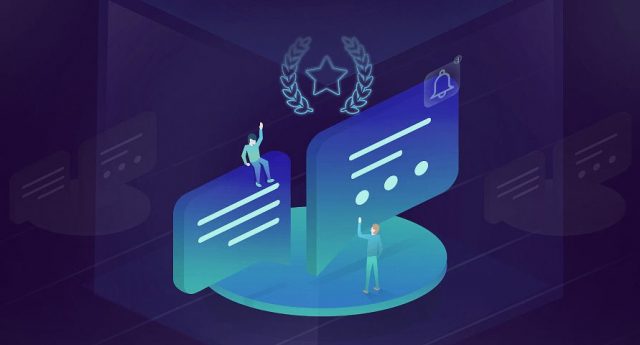With the emergence of new technologies and changes in customer demands, the Software-as-a-Service industry evolves to rise to the situation. This implies that SaaS businesses also face a new set of challenges. They need to establish a loyal customer base and maintain a steady flow of revenue.
A new study has shown that about 90 percent of SaaS startups do not survive their third year of being founded. The part worth cringing over shows that only 2 percent of the surviving businesses are actually profitable!
To thread safely and avoid being reflected in the negative statistic, knowing the most common challenges enterprise SaaS startup owners face and the SaaS security best practices when starting their business is necessary. Then, once you can commit to the necessary planning and growth strategies, you should be able to overcome most of these challenges. But before we dive deep, let’s take a brief look at what SaaS means.
What is SaaS?
SaaS means Software as a Service, and it is a software distribution model that requires cloud providers to host applications accessible to end users over the internet. In essence, resources can be delivered to the user using the web or a web browser while the provider manages the security and overall Infrastructure. The SaaS model comes with a wide range of benefits. It is not as expensive as traditional software models, especially since it doesn’t require Software and hardware infrastructure maintenance. It can also be timely executed, and its users do not have to possess high IT skills.
SaaS is one of the core categories of cloud computing, including platform as a service (PaaS) and Infrastructure as a service (IaaS). SaaS products range from IT tools to personal entertainment services and are used by business owners, IT professionals, and personal users.
A report by McKinsey & Company showed that technology industry analysts expect to see a rise in the SaaS market to about $200 billion in 2024.
How Does Software as a Service Work?
SaaS works through the cloud delivery model. A software provider will either host the application and related data using its servers, databases, networking, and computing resources. It may also be an ISV that contracts a cloud provider to host the application in the provider’s data center. The application will be accessible to any device with a network connection. SaaS applications are typically accessed via web browsers.
How Does SaaS work?
SaaS is delivered on a hosted platform. Traditionally, Software is delivered by being installed as files that would be loaded into the user or administrator hardware. However, most organizations no longer deal with owning virtual hardware tools but have migrated into deploying virtual machines in some data centers. This helps them function better in some responsibilities and still implement the software installation and maintenance.
The core purpose of SaaS is to reduce the cost and time needed for deploying it. Installing the Software on the machine upon which you will be using it is unnecessary. It lowers operational costs, reduces risks of operations, and provides known costs all through the period of the contract.
Top SaaS Business Most Common Challenges include
1. Poor Revenue Generation
As a result of the high cost of operation, SaaS businesses need to generate sufficient income to cover basic costs and earn revenue. This can be achieved through accurate product pricing, coming up with targeted marketing campaigns, and finding the right mix of inbound and advertising marketing. You can price your product through a subscription-based model or offer free trial privileges with a monthly or annual subscription. You may also create options for discounts when bulk purchases are being made.
And more importantly, focusing on retaining your customers rather than acquiring new ones is more profitable. Some strategies to implement include delivering top-notch customer service, developing a loyalty program, developing a solid brand, and keeping close contact with your customers.
2. High Management Costs
SaaS business owners must be able to manage their costs efficiently to minimize expenses, outsources non-essential jobs, and automate tasks to enjoy increased profits. Reduced expenses can be achieved by renegotiating contracts and eliminating unnecessary fees and costs.
You may want to save costs on office space by moving to a cheaper alternative, renegotiating contracts with vendors, or finding ways to reduce marketing expenses. You can also automate invoicing and billing as a cost-reduction strategy.
3. Insufficient Capital
SaaS business owners need to make provisions for adequate capital to cover the recurring costs of the business. You can do this by taking on investors or issuing debt or equity. Issue equity by selling company shares to investors through equity crowdfunding.
Suppose you consider taking on investors, issuing equity or debt, or selling a part of your business to investors. And if you want to take on debt, you may reach out to banks and other financial institutions. Consider low-interest options and exhaust other avenues to raise capital before taking a loan.
4. Not Scaling Fast
Many SaaS businesses face the issue of not scaling in time to meet customers’ demands. You can automate processes, employ the necessary tools, and hire the right workers. In addition, you can save money by automating customer onboarding, lead generation, and billing processes.
Your business needs to have the right hands on deck, as they will be beneficial to helping your business scale. Also, using the right SaaS business tools such as marketing automation software, customer relationship management (CRM) software, and project management tools.
5. Poor Pricing Model
One of the most challenging parts of running a SaaS business is creating the perfect pricing model. You’ll need to look at the price of your competitor’s products, the value of your products, and customers’ willingness to make the required payment for products.
Try working with a different pricing model to see what fits your kind of business. Some popular pricing models for SaaS businesses are feature-based, subscription-based, and usage-based.
Follow Techiemag for more!
Table of Contents








